Brown in interior design
From the point of view of psychologists, this color has a calming effect, relaxes, gives a feeling of comfort and safety. People surrounded by brown note that in such an environment it is easier for them to make difficult, responsible decisions. That is why all shades of brown are chosen by established, successful people who know well what they need from life and who know how to get it.
Advice: If you want to add solidity to the room, fill it with home comfort and at the same time create a feeling of "solidity" - brown the floors and furniture.
Brown - rich in color, it has a wide variety of shades and can be either warm or cool.
- In large rooms facing the sun, dark colors such as dark chocolate or coffee can be used.
- If the room is small, light shades of coffee with milk will help expand it.
- Optimism and mood will add reddish-orange color options, and "milk chocolate" will calm and relax.
Since the color is natural, it looks natural on various textures. The structure of the wood, the tenderness of silk, the hairiness of velvet, the gloss of the leather, the roughness of the stone, the weaving of the mat - all these textures will help diversify the decoration of the room, bring freshness and individuality into it. The combination of brown in the interior with other colors is used in various styles - from classic to country. And it always adds a sense of home warmth and security.
In which rooms to use brown?
In any room of an apartment or house, you can use shades of brown, but it must be remembered that the smaller the area of the room, the lighter the color should be.
Brown color in the design of the living room
As a rule, this is the largest room in the apartment, so brown shades in the living room can be used without restrictions. It remains only to choose the desired tone and think over the combination with other elements of the decor. So, brown furniture against a brown background of the walls will not be noticeable, especially if their color is close in tone and saturation.
Bedroom interior in brown
The interior of the bedroom in brown will contribute to calm rest and complete relaxation. A small room completely decorated with different shades of the same color looks incredibly elegant. It can be "diluted" with the white color of the ceiling and bed linen.
Children's room in brown
The child grows and develops, so the stability that brown carries in itself is not very suitable for a child, however, its calming effect can positively affect children with increased activity. Separate brown elements should be used in the child's room, complementing them with cheerful, active colors.

Brown color in the interior of the kitchen
In the interior of the kitchen, brown declares the solidity of the owners. It is associated with family traditions. In addition, it is a "tasty" color that promotes enjoyment of food, and at the same time does not provoke overeating.
Bathroom interior in brown
The larger the area of this room, the more reasons to decorate the bathroom interior in brown. Brick, natural stone, terracotta tiles - these materials have a natural brown tone and give the interior an ecological focus. The combination of dark brown wall decoration with white fixtures looks very stylish.
Various shades of brown in the interior
The combination of only one brown color in the interior, but in different shades, is often used by designers to create elegant and stylish living spaces. Against this background, both furniture and decorative accents look advantageous. Applying a variety of tones and varying color saturation, you can create visual effects of increasing space, "raise" ceilings, align the wrong proportions of rooms.
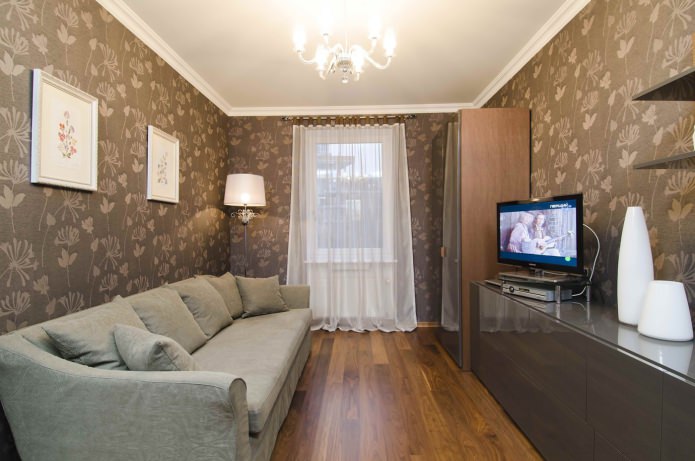
- Light brown is used in interiors where you need to create a feeling of spaciousness, expand the area, add light and "air".
- A thicker dark brown color highlights individual elements, sets semantic accents, and emphasizes architectural elements. It can also be the main one, for example, when light furniture or plumbing is placed against a dark background of the walls.
The combination of brown with other colors in the interior
Brown shades go well with the following color groups:
- Neutral;
- Contrasting;
- Accent.
To the first group includes colors used in interiors as background. This is primarily white, as well as gray and beige.
White and brown in the interior
The combination of white and brown in the interior is considered classic and suits any style. Moreover, they can have a variety of shades and differ in saturation. So, against the background of thick chocolate, a milky white tone looks great, and a rich creamy one suits a light coffee shade. By combining shades and their saturation, you can get contrasting or calm interiors.
Beige and brown colors in the interior
Brown and beige colors in the interior are excellent partners, harmoniously complementing each other and creating coziness. Beige adds tenderness to brutal brown, lightens it. This combination reflects a harmonious combination of masculine and feminine principles, and is especially suitable for decorating bedrooms.
Taupe in design
Gray is combined with brown in those cases when they want to "brighten" the room, without adding other paints to it. The accent elements of the interior are particularly striking in this version.
Taupe can be a great backdrop to showcase the rich brown tones of furniture, creating a pleasing contrast and, at the same time, not fatiguing with a variety of colors.
To the second group includes rich, saturated, but not too bright colors.
Purple and brown in the interior
Combining brown and purple colors in an interior can give a room an elegance and a touch of royal luxury.
Green and brown colors in the interior
The combination of green and brown in eco-style interiors has already become a classic, and is especially widely used for decorating living rooms. Moreover, green can be both more active in this pair and act as an accent, and vice versa, soft and background in relation to bright brown.
Used in the same interior, green and brown colors have great expressive capabilities, which is due to the difference in shades and saturation. This pair can be used in any style, and, in addition, it has a positive effect on the human nervous system.
Third group includes bright colors traditionally considered accent, such as orange, bright blue or turquoise.
Orange and brown in design
Combining orange and brown in the interior, you can achieve a feeling of freshness, bring a "piece of the sun" even into the darkest room.
Design in blue and brown
The interior in blue and brown colors can be decorated in both classic and nautical styles, and it carries both the calmness and reliability of the Earth, and the mobility and changeability of the air, adding expression.
Interior in turquoise brown
Turquoise and brown colors in nautical interiors have become classics for a long time. They add romance even when there is no direct reference to the "marine" theme in the design.
In addition, turquoise and brown are often used in modern styles - in this case, turquoise can be used in accessories, decor or appliances, and brown in flooring, walls, furniture or decorating windows and doors.
Brown-pink color in the interior
The use of brown and pink colors in the interior of a child's room may seem unexpected, but in fact, such a combination will be very beneficial for the child's nervous system.
Brown-blue color in the interior
Brown and blue are also a good combination; interiors in which the main goal is to create a calm, cooling atmosphere are often decorated using this color pair.
In addition, you cannot ignore the so-called "mixed" colors, which allow you to add paints directly to the main tone.
Yellow-brown color in the interior
A light yellow-brown color in the interior of a small darkened room will expand it and fill it with sunlight.
Red-brown color in the interior
The red-brown color in the interior of any room will give stability and solidity, as it will be associated with brickwork - a symbol of the reliability of home walls. It will make even the most modern interior more solid and traditional.
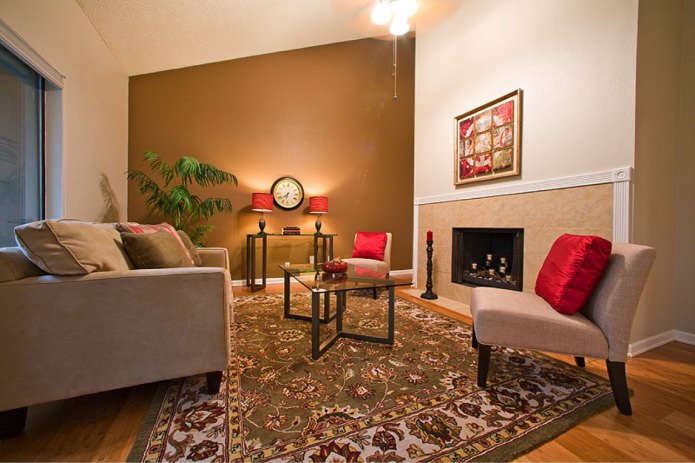

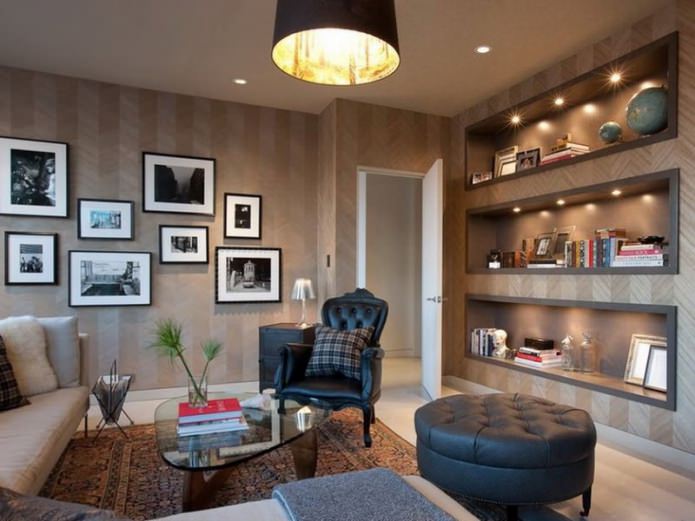
 10 practical tips for arranging a small kitchen in the country
10 practical tips for arranging a small kitchen in the country
 12 simple ideas for a small garden that will make it visually spacious
12 simple ideas for a small garden that will make it visually spacious
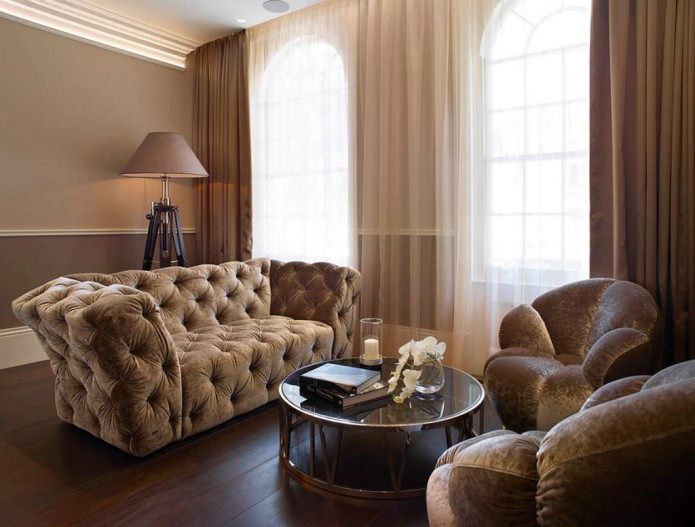
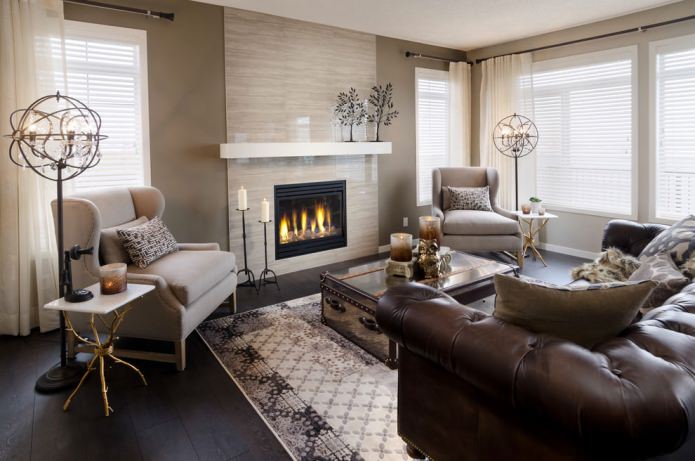
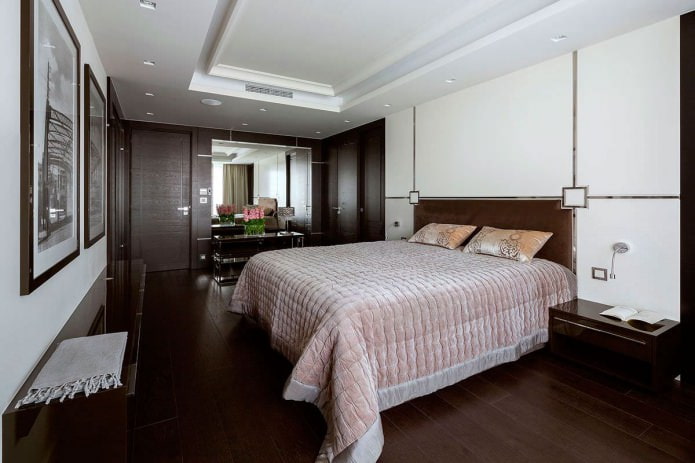
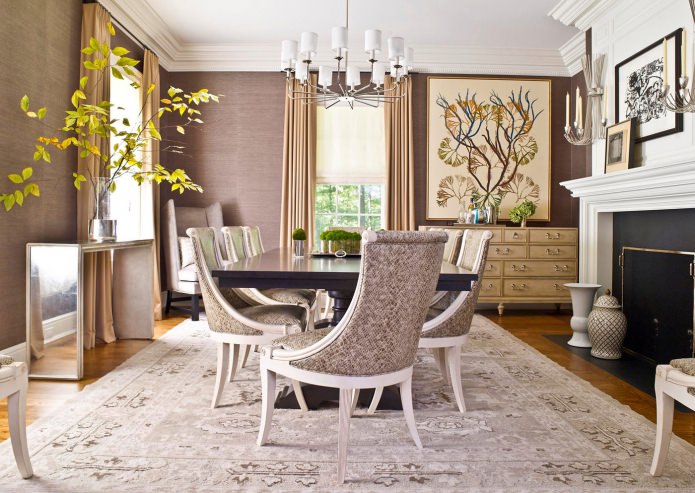
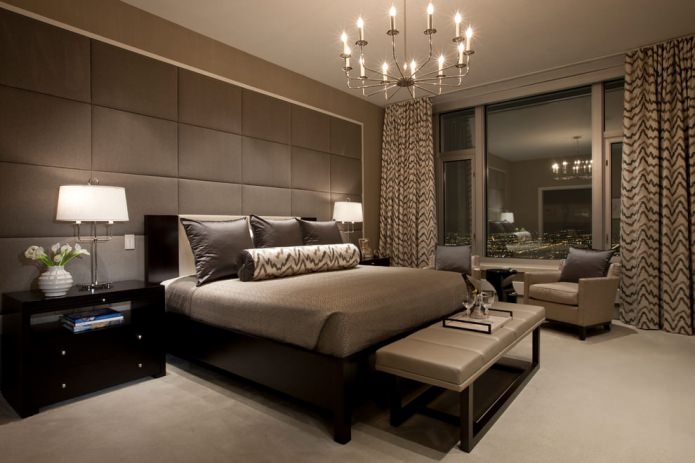

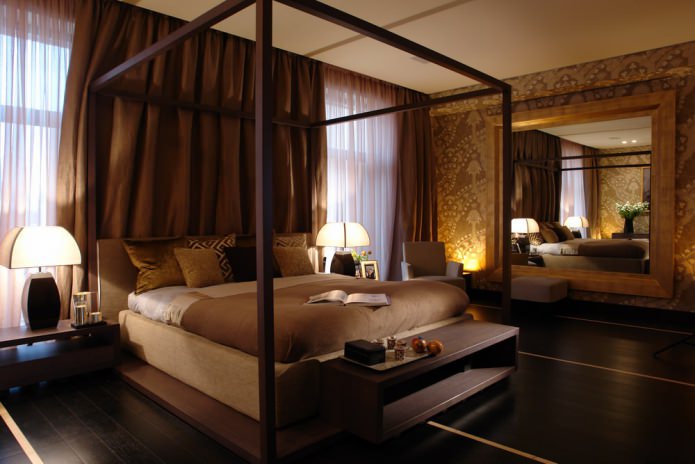
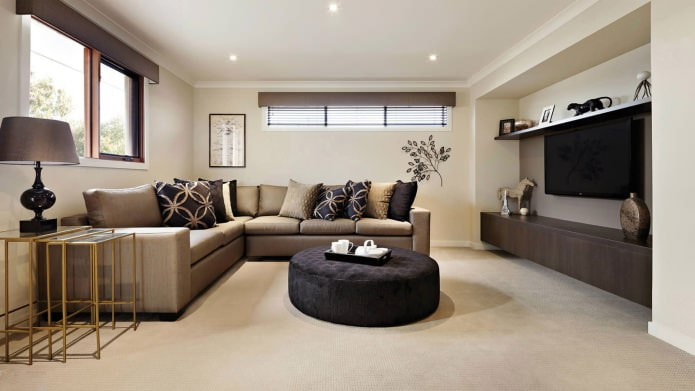


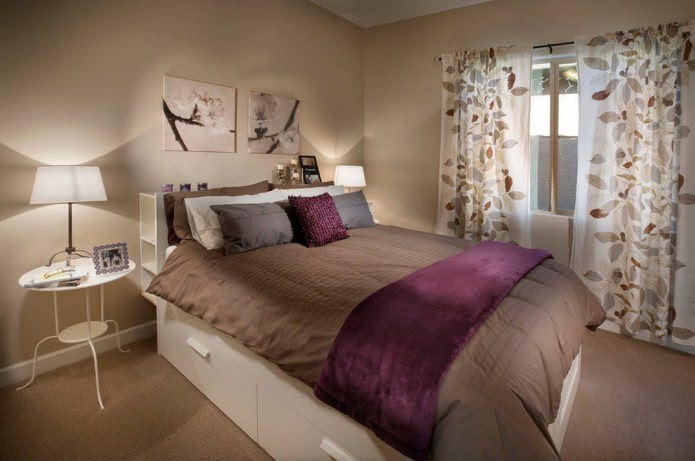
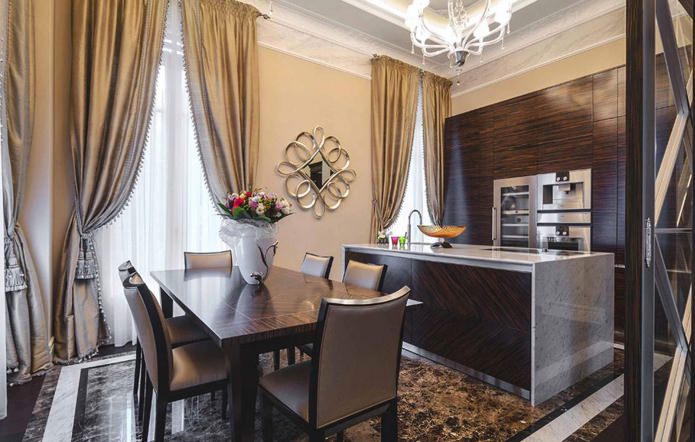
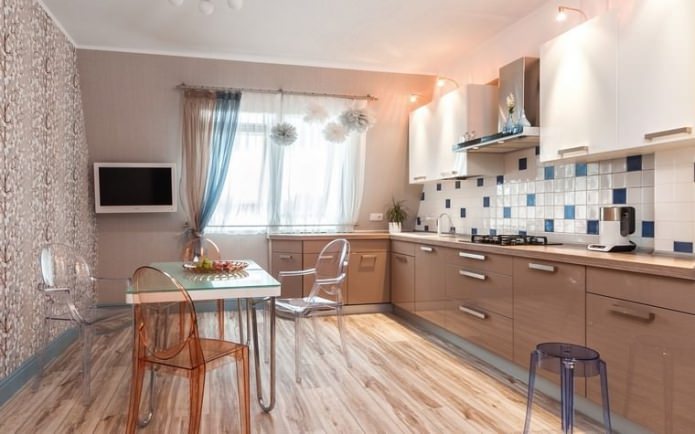
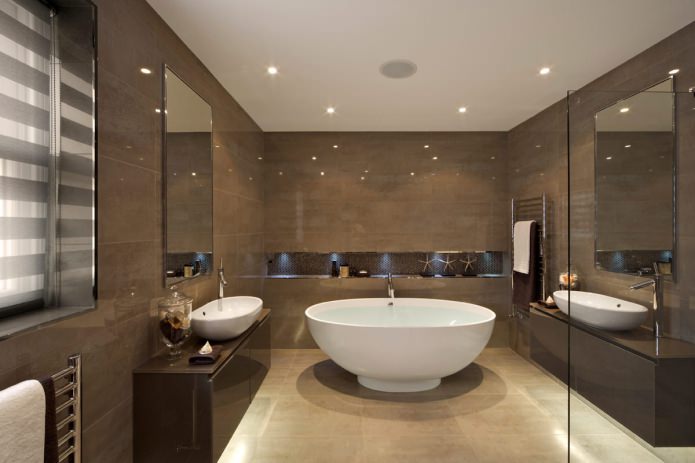

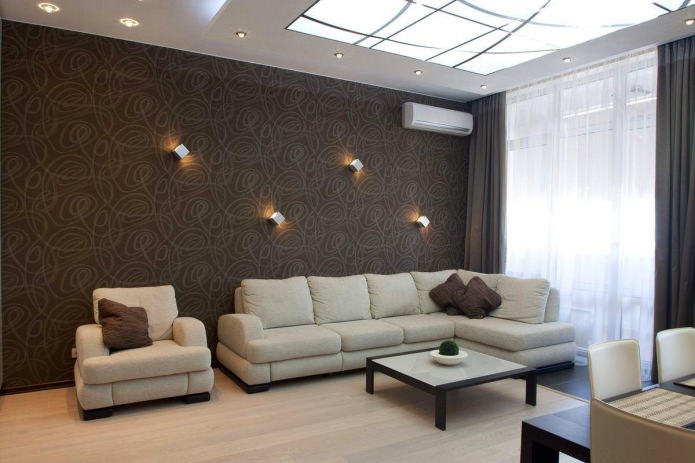
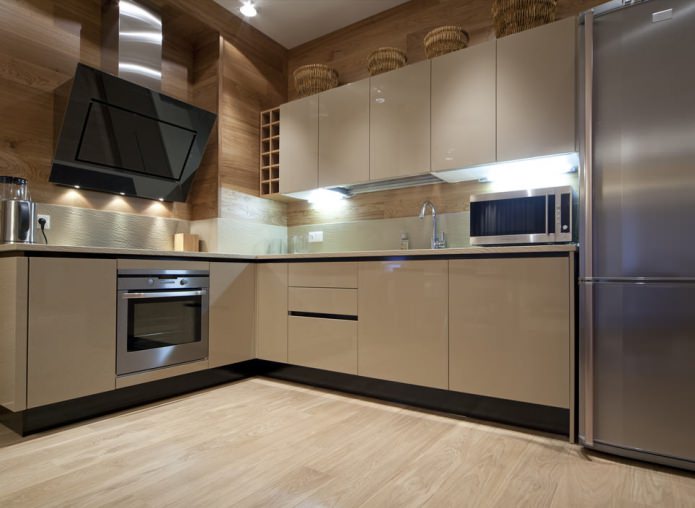
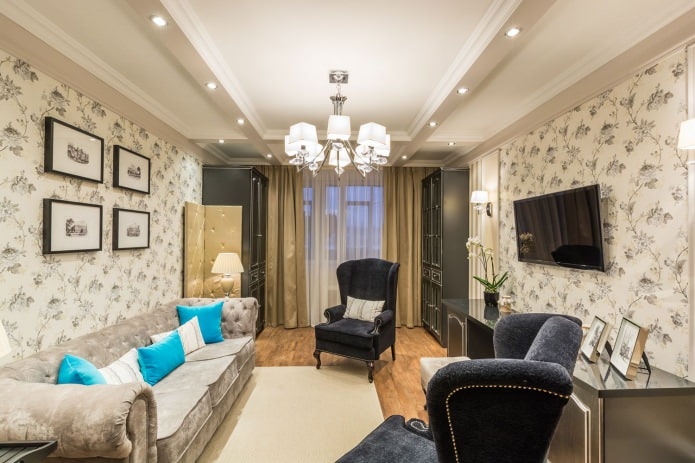
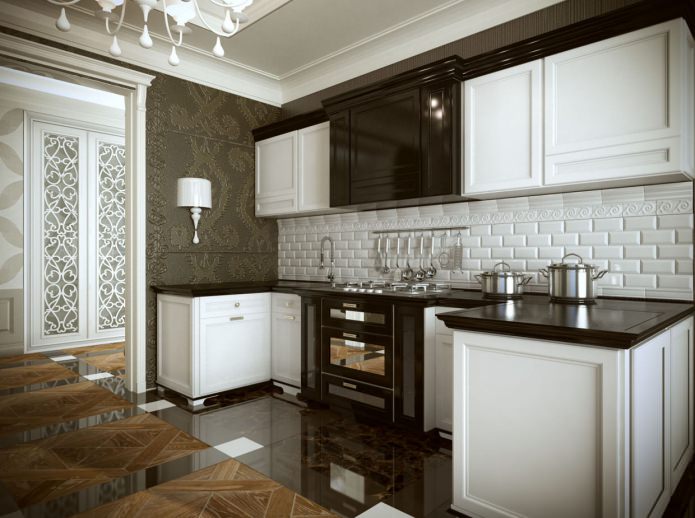
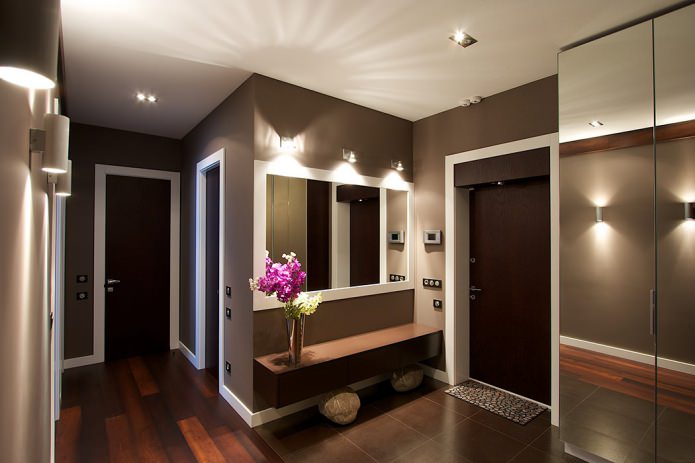
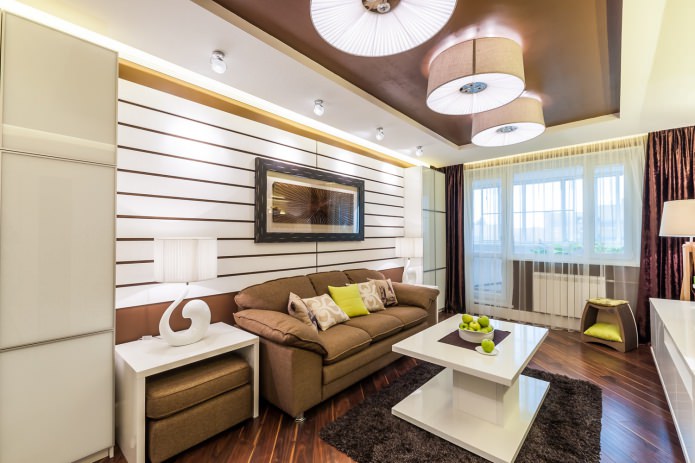
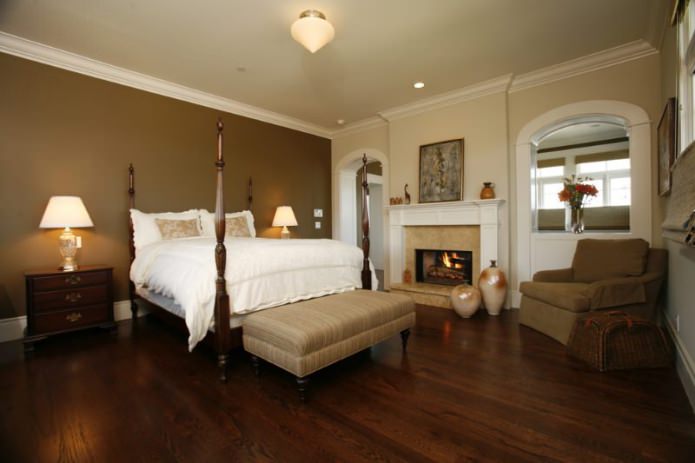
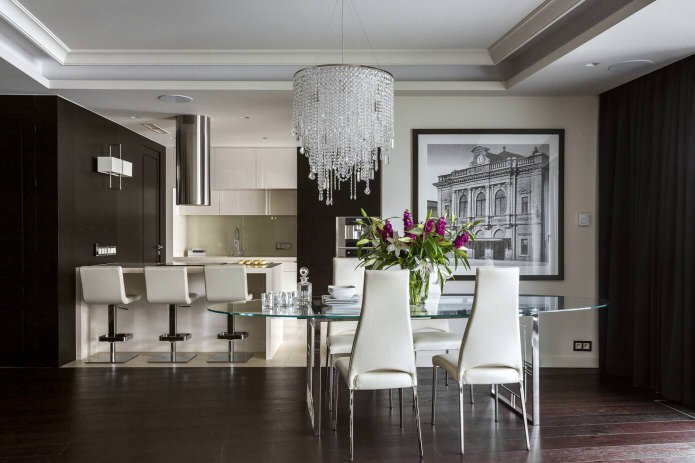
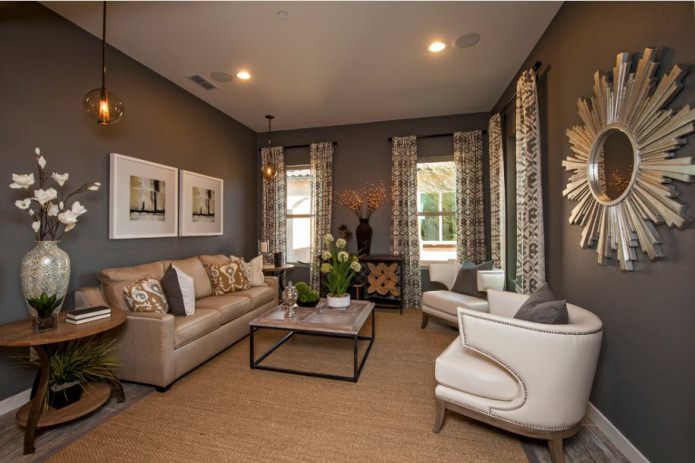
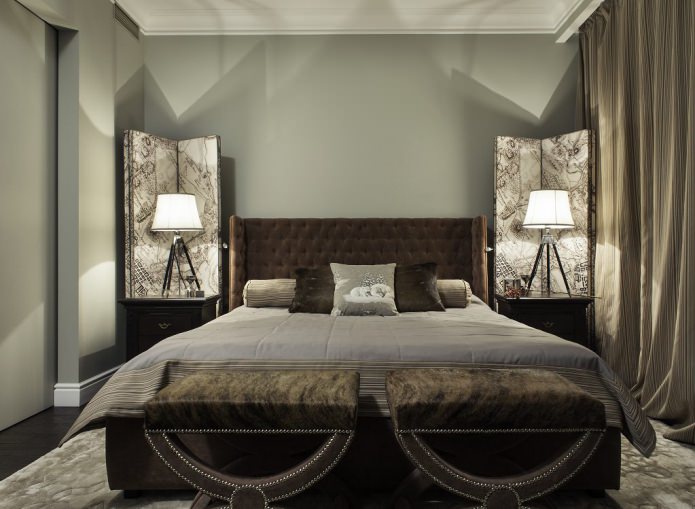
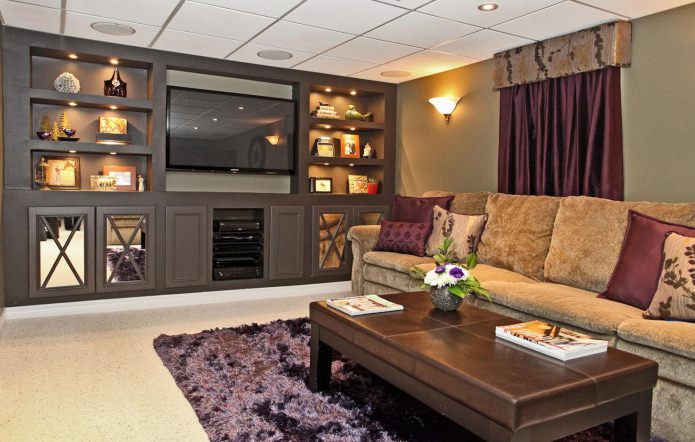
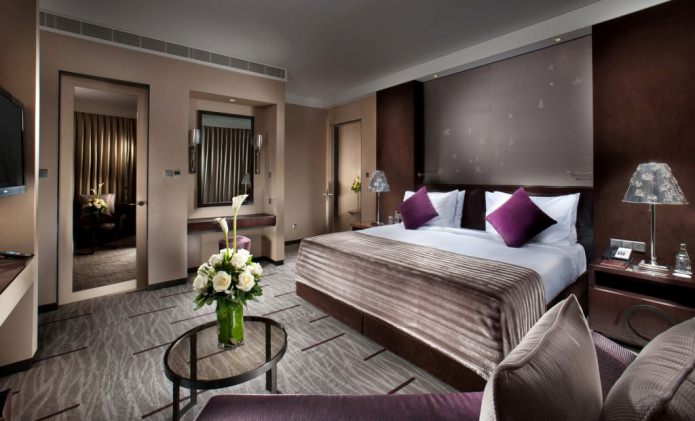
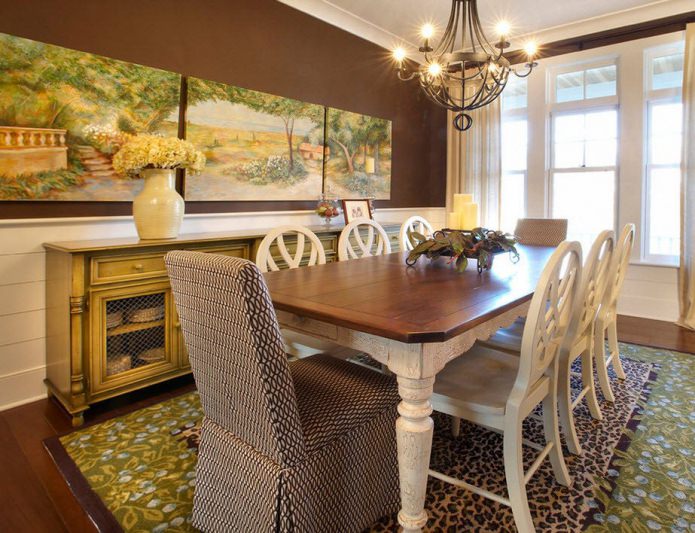

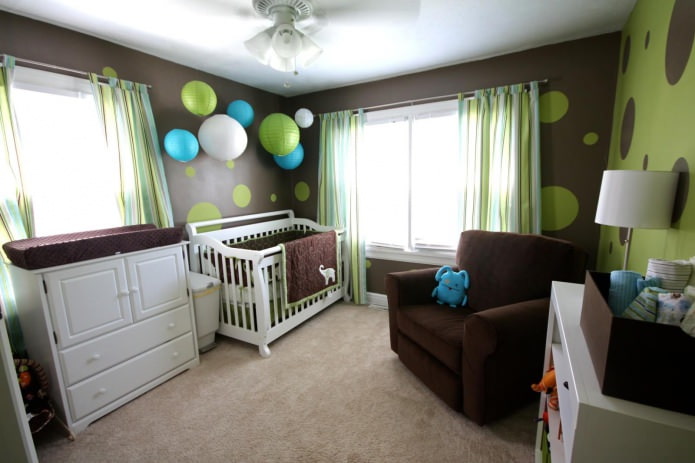
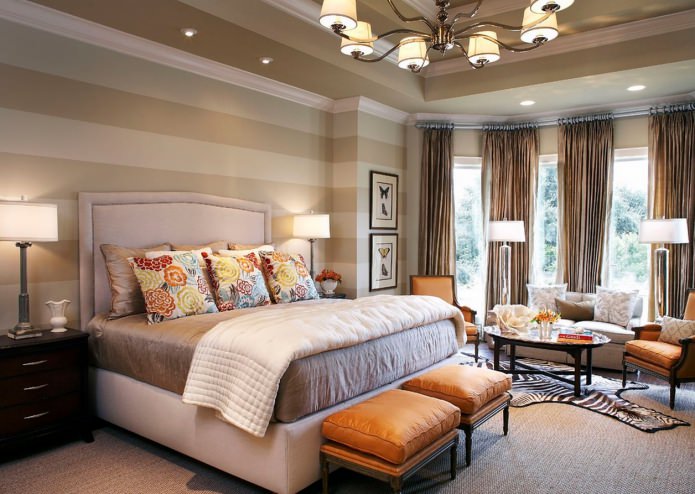
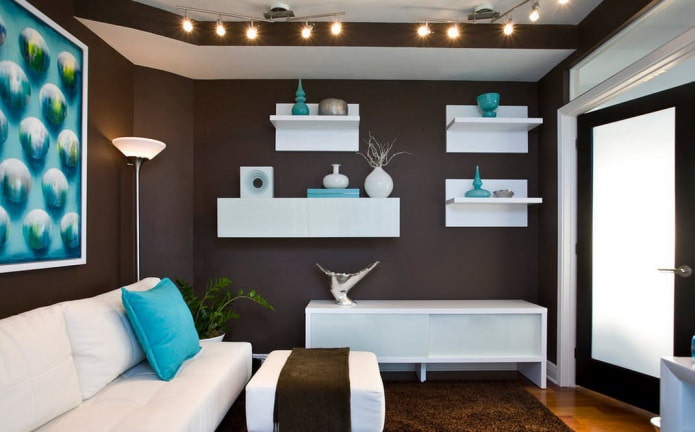
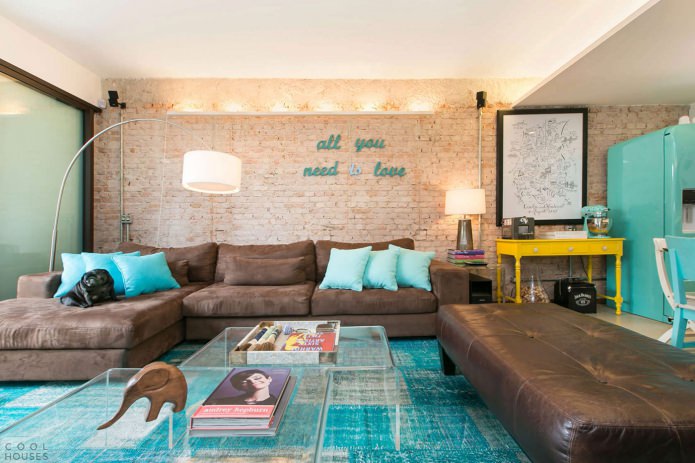



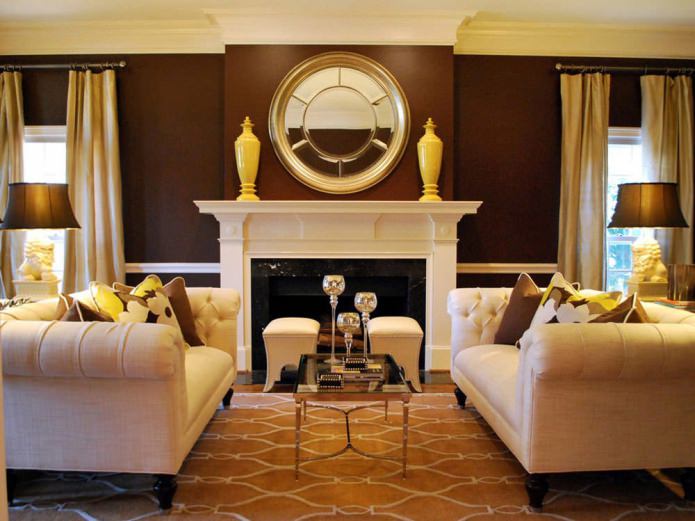
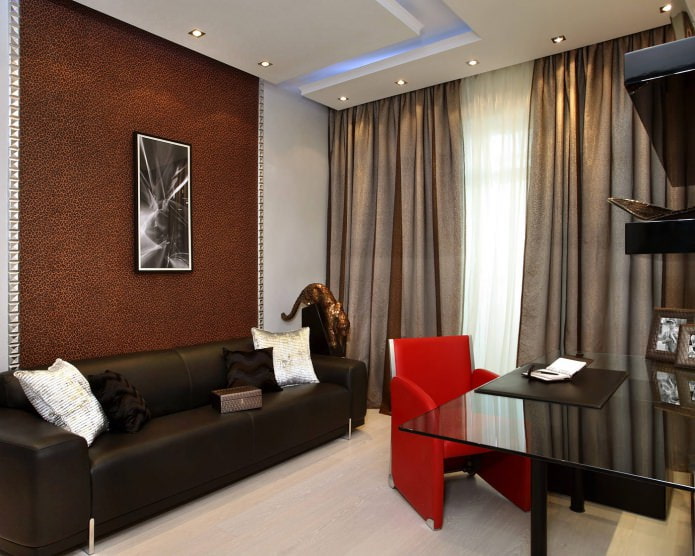
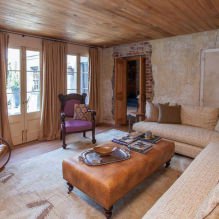

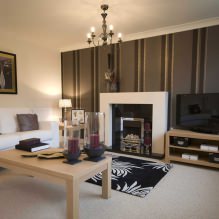

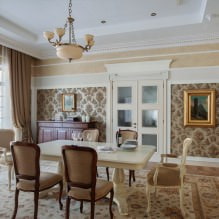

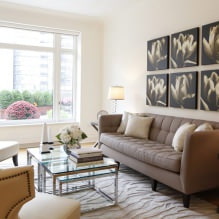
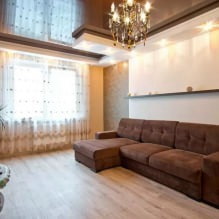
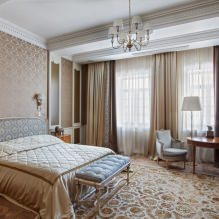

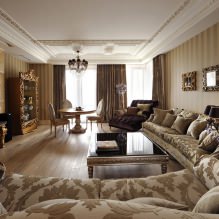
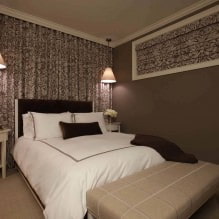

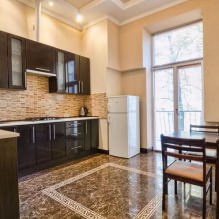
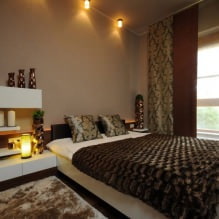

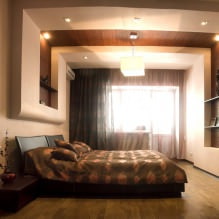
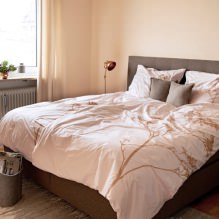
 13 bad habits a good housewife shouldn't have
13 bad habits a good housewife shouldn't have 24/7 home cleanliness - 4 secrets for the perfect housewife
24/7 home cleanliness - 4 secrets for the perfect housewife 6 hotels in Sochi that will give odds to the promoted foreign hotels
6 hotels in Sochi that will give odds to the promoted foreign hotels Top 10 interior design trends 2020
Top 10 interior design trends 2020 Rating of cheap TVs with Smart-TV
Rating of cheap TVs with Smart-TV New Year's LED garlands on AliExpress - we disassemble while it's hot, so that it's bright at home
New Year's LED garlands on AliExpress - we disassemble while it's hot, so that it's bright at home